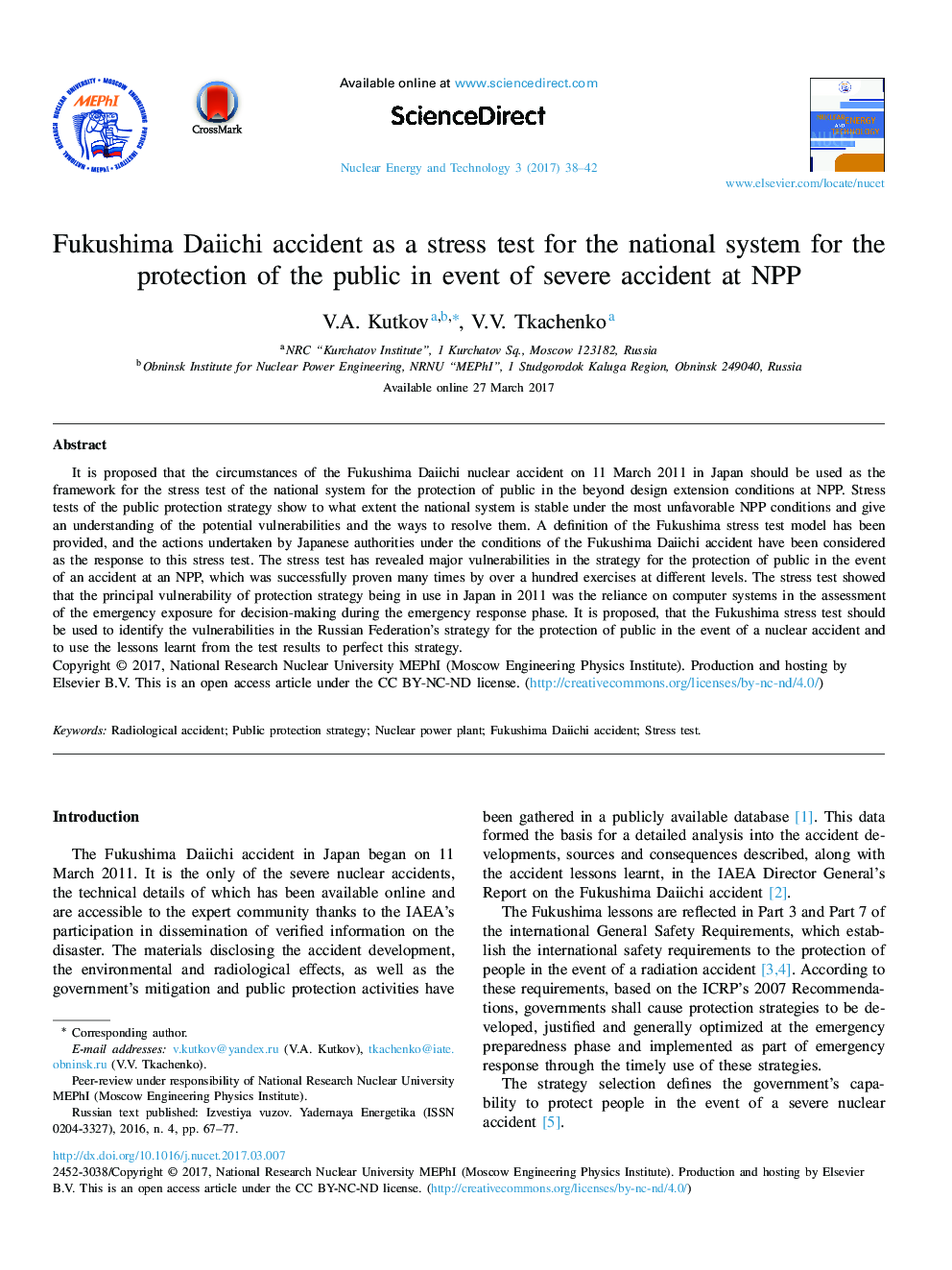| Article ID | Journal | Published Year | Pages | File Type |
|---|---|---|---|---|
| 6846111 | Nuclear Energy and Technology | 2017 | 5 Pages |
Abstract
It is proposed that the circumstances of the Fukushima Daiichi nuclear accident on 11 March 2011 in Japan should be used as the framework for the stress test of the national system for the protection of public in the beyond design extension conditions at NPP. Stress tests of the public protection strategy show to what extent the national system is stable under the most unfavorable NPP conditions and give an understanding of the potential vulnerabilities and the ways to resolve them. A definition of the Fukushima stress test model has been provided, and the actions undertaken by Japanese authorities under the conditions of the Fukushima Daiichi accident have been considered as the response to this stress test. The stress test has revealed major vulnerabilities in the strategy for the protection of public in the event of an accident at an NPP, which was successfully proven many times by over a hundred exercises at different levels. The stress test showed that the principal vulnerability of protection strategy being in use in Japan in 2011 was the reliance on computer systems in the assessment of the emergency exposure for decision-making during the emergency response phase. It is proposed, that the Fukushima stress test should be used to identify the vulnerabilities in the Russian Federation's strategy for the protection of public in the event of a nuclear accident and to use the lessons learnt from the test results to perfect this strategy.
Related Topics
Physical Sciences and Engineering
Energy
Nuclear Energy and Engineering
Authors
V.A. Kutkov, V.V. Tkachenko,
